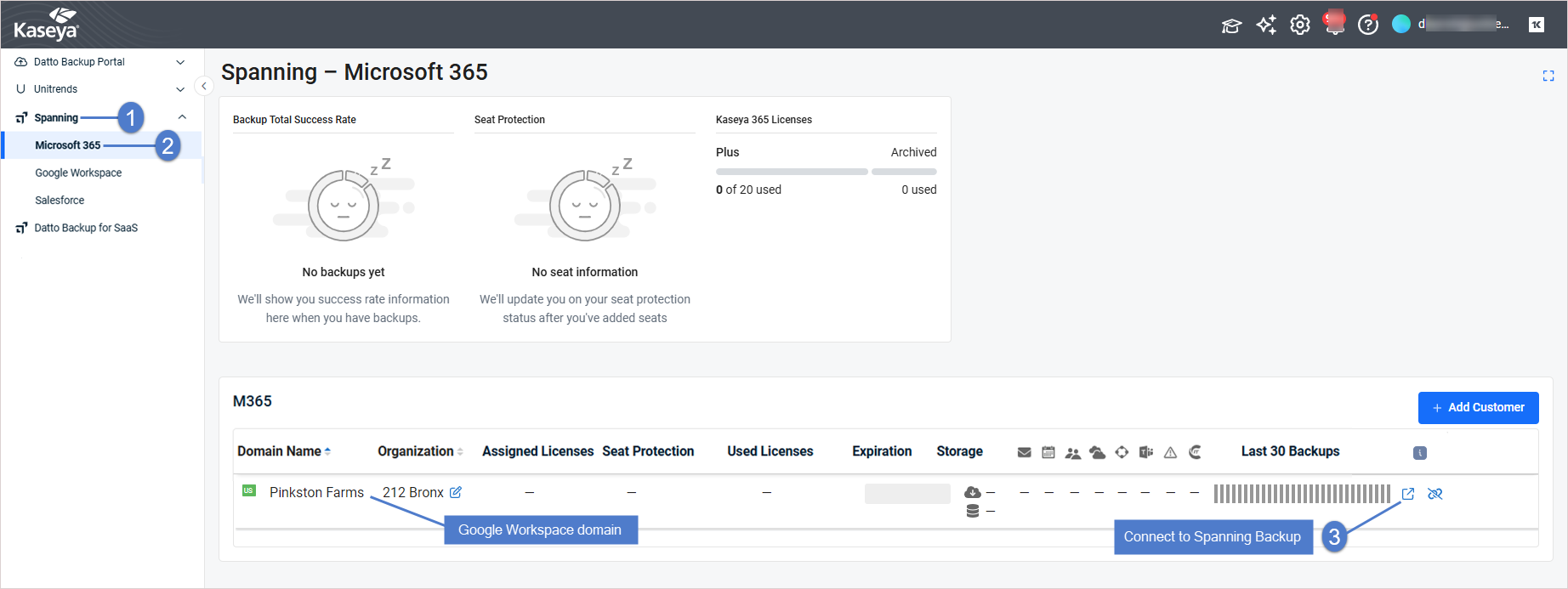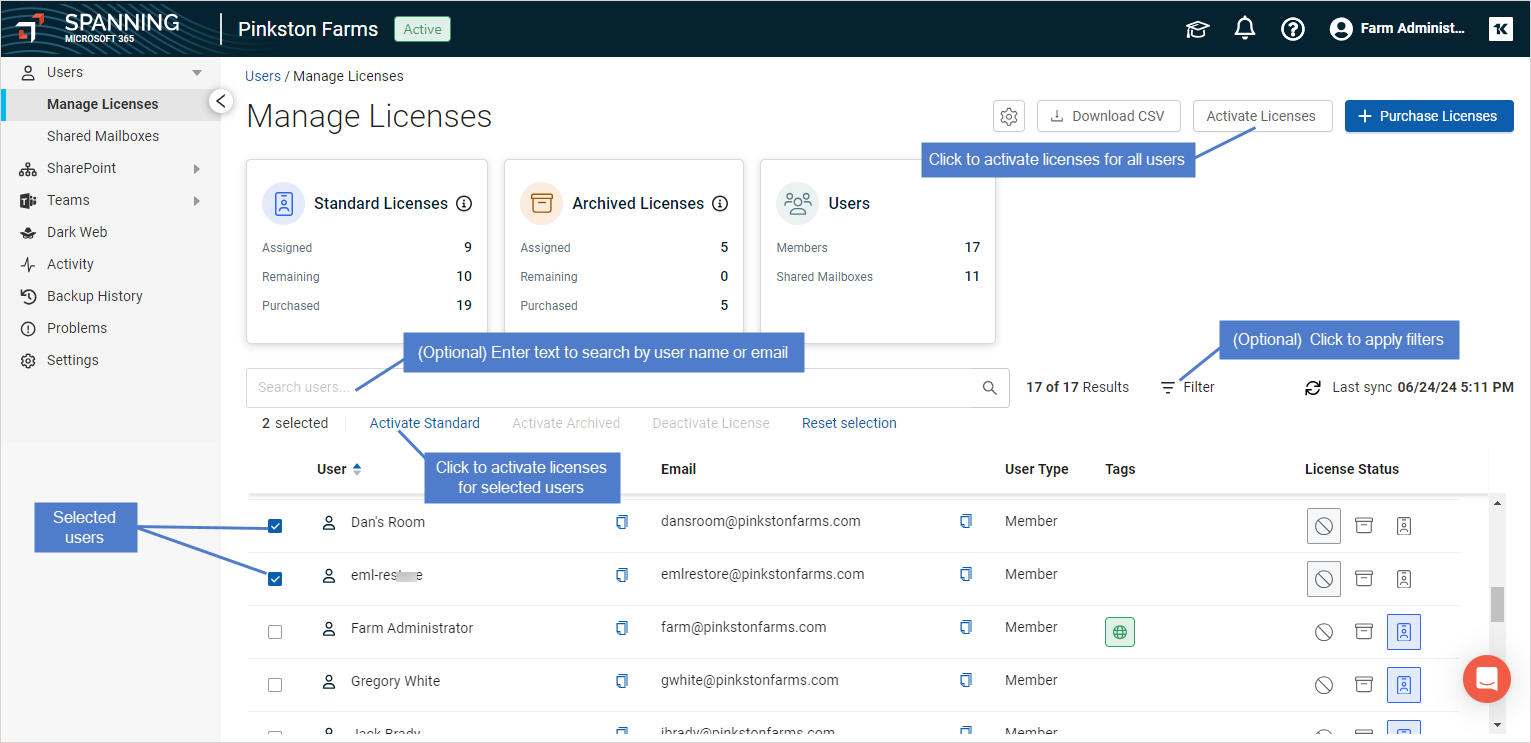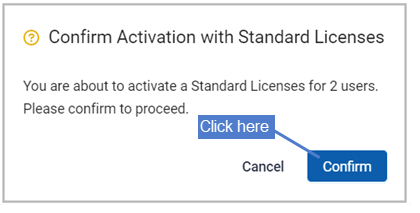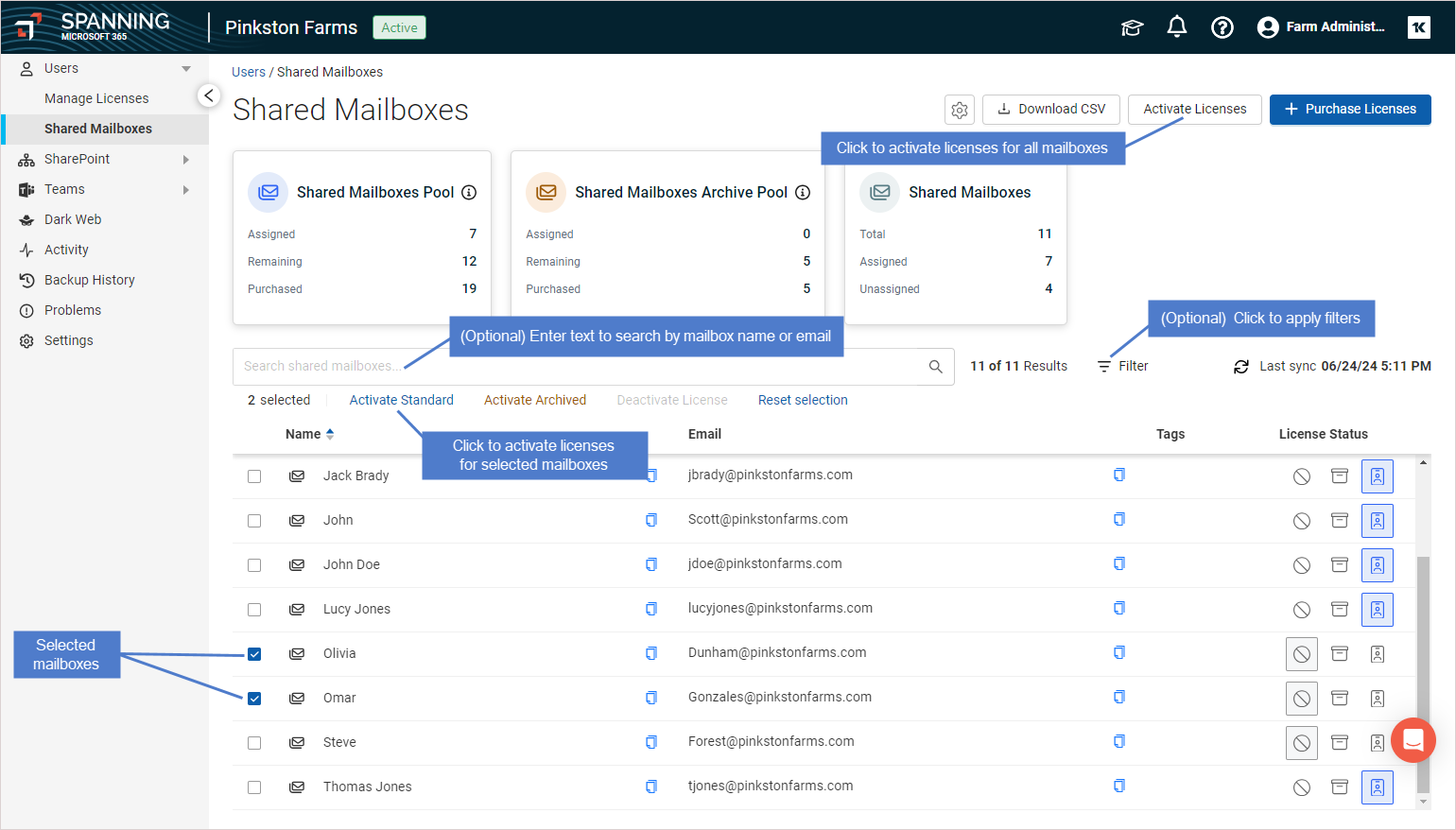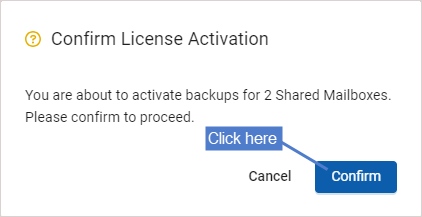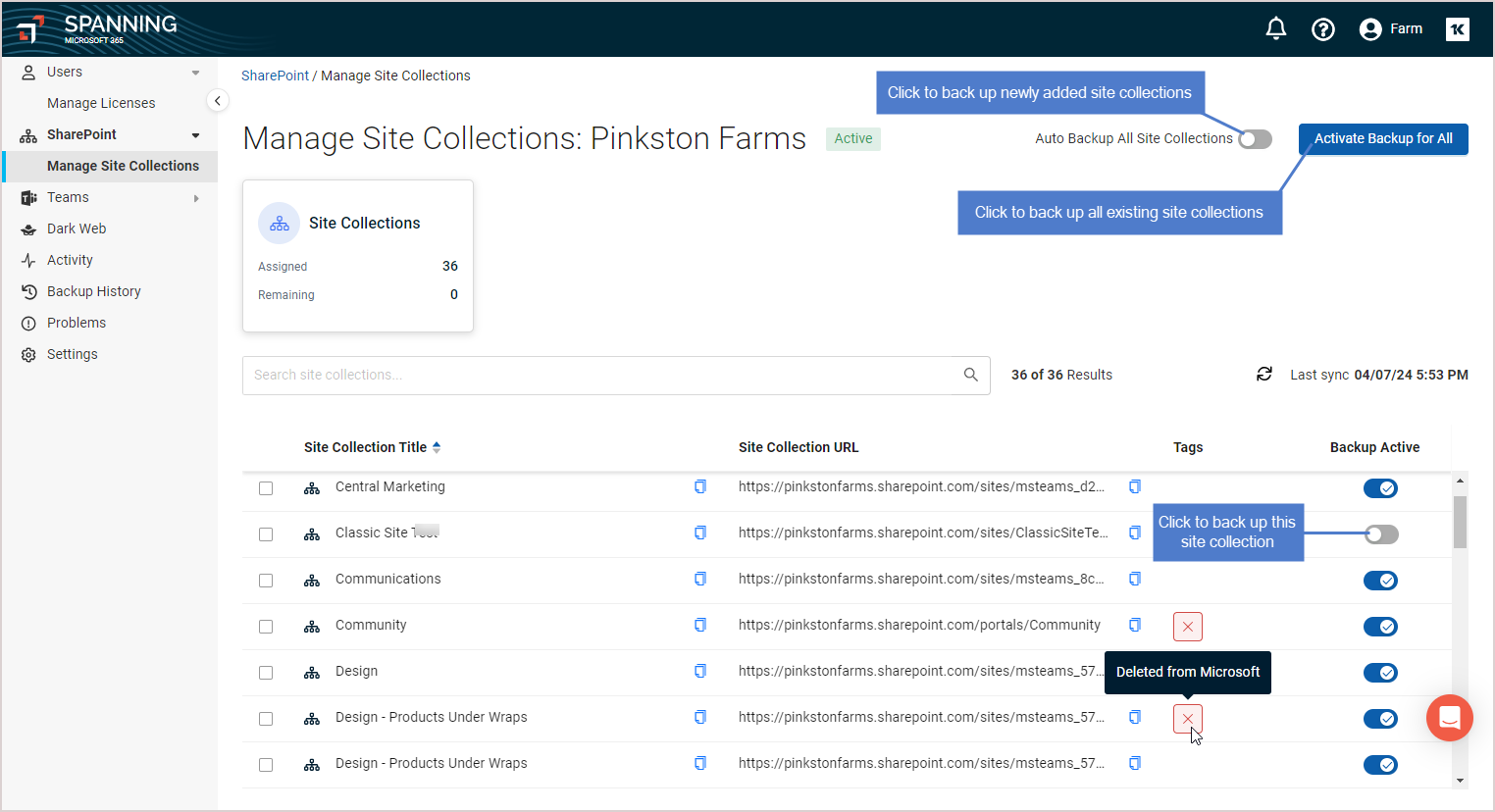This guide was written for individuals who administer Spanning Backup for Microsoft 365. It contains the information you need to install and configure Spanning Backup for Microsoft 365, as well as how to use Spanning to restore data, export data, and manage Spanning Backup. It’s divided into functional parts intended to support you as you manage your environment.
Kaseya 365 customers
If you have purchased Kaseya 365 and are new to Spanning Backup, you will complete your initial setup steps in KaseyaOne, UniView, and Spanning Backup. Refer to Getting Started with Kaseya 365 for information on the Kaseya 365 Setup Guide that the Implementation Contact follows to setup Kaseya 365. Then proceed to Getting started with Spanning Backup to complete the remaining setup procedures in UniView and Spanning.
NOTE Your Kaseya 365 User subscription includes Datto Backup for Microsoft Entra ID. This module is managed through the SaaS Backup page in the UniView portal. If you are using Microsoft Entra ID, start running automated backups of your Entra ID tenant configurations as described in this article: Welcome to Datto Backup for Microsoft Entra ID.
Partner-managed Spanning Backup customers without Kaseya 365
If Spanning Backup was provided to you through a Kaseya partner/MSP and you are not using Kaseya 365, you will complete your initial setup steps in UniView and Spanning Backup. See this topic for setup procedures: Getting started with Spanning Backup.
Direct Spanning Backup customers
If you are a direct Spanning customer (e.g., your Spanning Backup account or trial was NOT provided by a Kaseya partner/MSP), setup procedures vary by whether your Spanning Backup module is part of a Kaseya 365 subscription:
-
If you have a Kaseya 365 subscription, you will complete your initial setup steps in KaseyaOne, UniView, and Spanning Backup. Refer to Getting Started with Kaseya 365 for information on the Kaseya 365 Setup Guide that the Implementation Contact follows to setup Kaseya 365. Then proceed to Getting started with Spanning Backup to complete the remaining setup procedures in UniView and Spanning.
-
If you do NOT have a Kaseya 365 subscription, see this topic for setup procedures: Getting started with your standalone Spanning Backup subscription (direct Spanning customers).
With Spanning Backup you get automated, enterprise-class protection of your Microsoft 365 data. Spanning Backup for Microsoft 365 provides these backup types:
- User backups – Spanning backs up this data for each licensed user: Mail, Calendars, Contacts, and OneDrive.
- Shared mailboxes – Spanning protects shared mailboxes. To run daily shared mailbox backups you must select specific mailboxes to protect as described below in Adding protection to shared mailboxes.
- SharePoint backups – Spanning backs up the document libraries and files contained within site collections in SharePoint. To run daily SharePoint backups you must select specific site collections to protect as described below in Enabling backup of SharePoint site collections.
- Teams Channel Conversation backups – Spanning provides automated backup of Teams data stored in SharePoint Online or OneDrive. In addition, you can opt to back up Teams Channel Conversations. To activate this feature, see To enable Teams Channel Conversation backup.
Your Spanning Backup module is managed through the UniView Portal. To start using Spanning Backup, you will perform some steps in UniView Portal and others directly in Spanning Backup. See the following steps to start protecting your Microsoft 365 tenant with Spanning:
To administer Spanning Backup for Microsoft 365, the following are required:
- A Microsoft 365 for Business or Microsoft 365 Enterprise Tenant
- A Microsoft 365 Global Administrator account
- A Spanning Backup for Microsoft 365 subscription
- A supported TOTP authenticator application
NOTE UniView Portal requires two-factor authentication (2FA) using a supported TOTP authenticator application. If you are not already using a supported authenticator application, you will need to download and install one to your iOS or Android device before you can log in to the UniView Portal. For details, see Which authentication applications are supported by KaseyaOne?
After purchasing Spanning Backup, you receive a Welcome to UniView Portal email within 48 hours before your subscription's start date. Use the information in this email to log in to the UniView Portal.
Steps required to log in vary by whether you log in through KaseyaOne or directly into the UniView Portal. These considerations apply:
- In some environments, KaseyaOne has been integrated with UniView and log in with KaseyaOne is required. In this case, when you attempt to log in you are redirected to the KaseyaOne Login page. Enter your UniView Portal username and company name to log in through KaseyaOne. Follow the instructions on the pages that display.
NOTE For a more detailed step-by-step login procedure, see To log in with KaseyaOne credentials in the UniView Portal online help guide.
- In some environments, log in with KaseyaOne is optional. You can click Log in with KaseyaOne or enter your credentials on the UniView Portal login page.
- In some environments, log in with KaseyaOne is not enabled. In this case, the login page does not contain the Log in with KaseyaOne button and you must log in through UniView Portal. If logging in for the first time, you are prompted to set up 2FA authentication.
NOTE For a more detailed step-by-step login procedure, see To activate your account and log in for the first time or To log in using UniView Portal credentials in the UniView Portal online help guide.
If you are new to Spanning Backup, Login with KaseyaOne is enabled automatically. To confirm that this feature has been enabled, click ![]() and select the Integrations tab. View the setting in the KaseyaOne integration as shown here:
and select the Integrations tab. View the setting in the KaseyaOne integration as shown here:

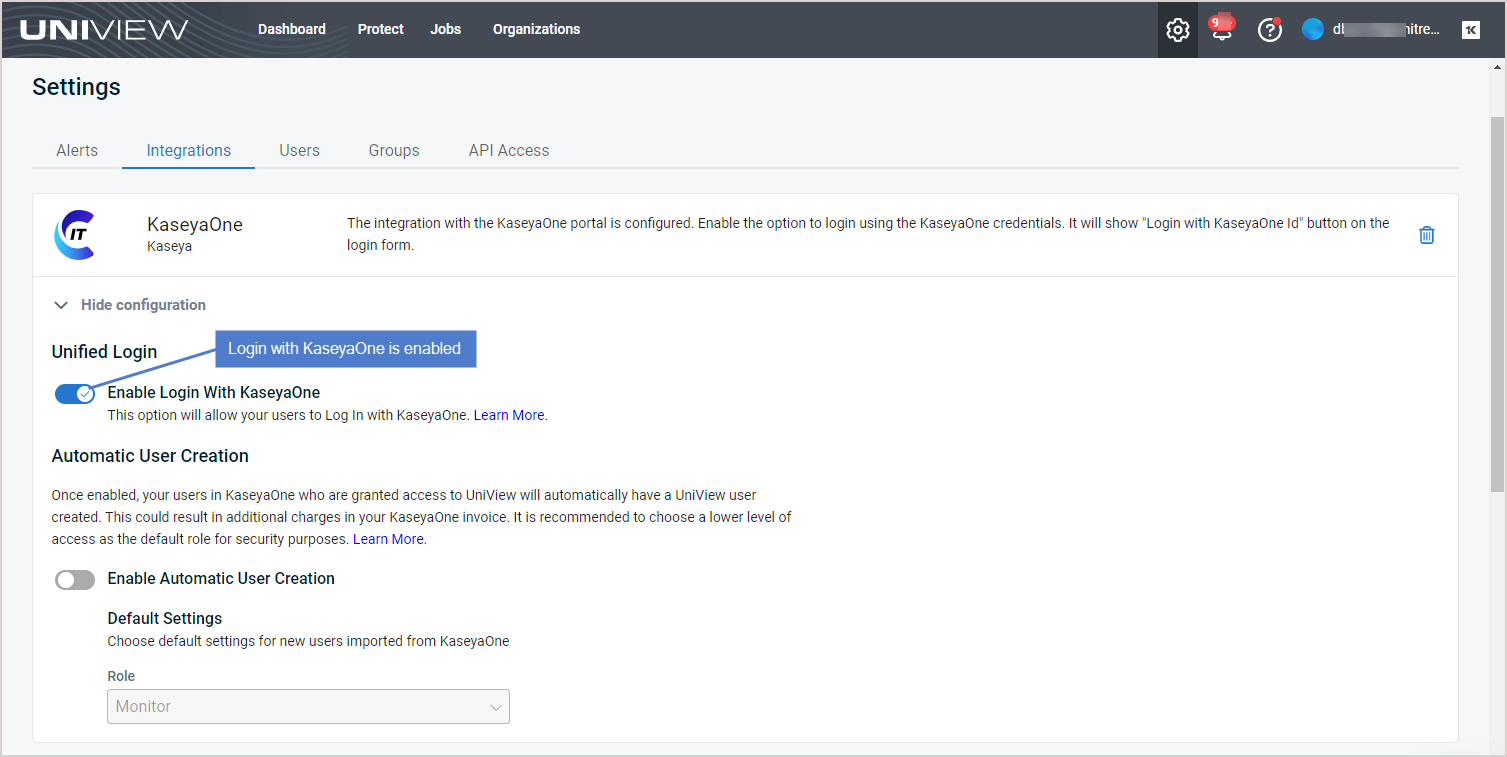 .
.
If the feature is disabled, simply click the Enable Log In with KaseyaOne feature toggle to enable it.
If KaseyaOne has not been integrated with UniView, you see an Integrate button in the KaseyaOne tile on the Integrations tab. To add the integration, see Integrating KaseyaOne in the UniView Portal online help guide.
To launch the self-paced onboarding tour, click the graduation cap icon and select the Tasks tab. Click an onboarding task to view its tour: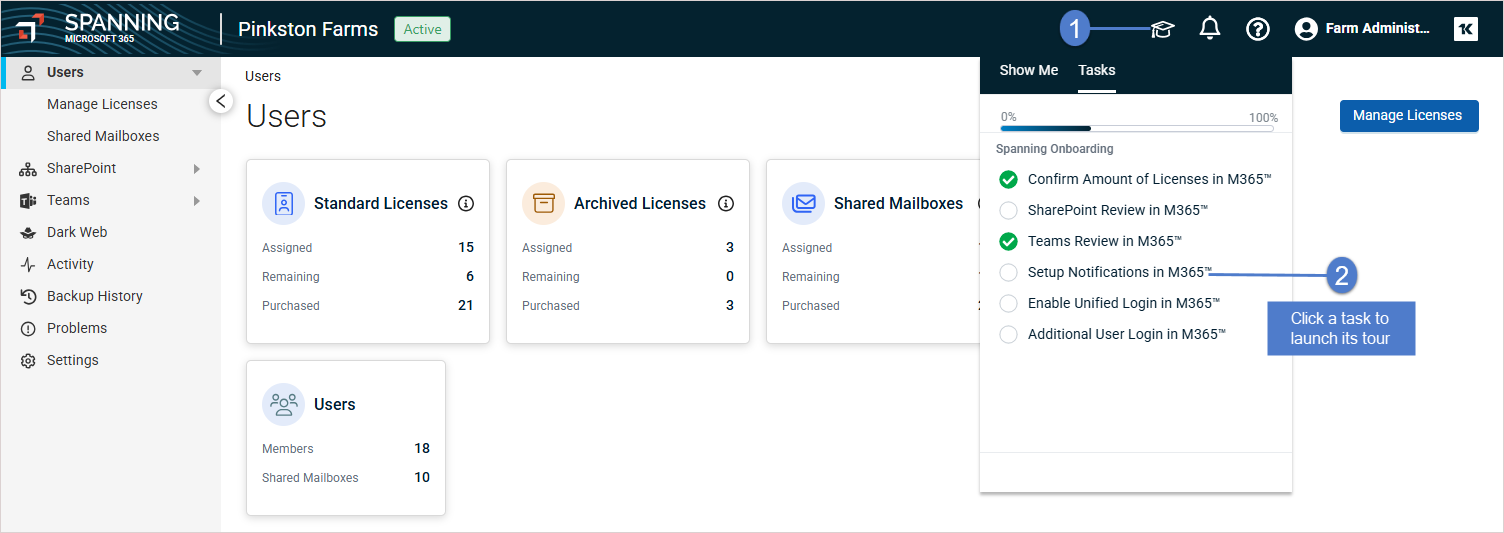
For supplemental information, see these topics in the UniView Portal online help guide as you're working through these tasks in the tour:
- Spanning Tenant Overview – See Adding an organization and Integrating a Microsoft 365 tenant.
- Provisioning Licenses – See To allocate Microsoft 365 licenses.
- Update Number of Licenses – See To upgrade from a Spanning Microsoft 365 trial to a paid subscription.
Use these steps to onboard your Spanning Backup for Microsoft 365 tenant:
- If this is your first time logging in, the self-paced onboarding tour launches automatically. If not, launch the tour by clicking the graduation cap icon and selecting a task on the Tasks tab. Click an onboarding task to view its tour:

- Complete the tasks in the onboarding tour.
- Repeat this procedure to onboard additional Microsoft 365 tenants.
See the following topics for supplemental information:
NOTE In the procedures below, the summary tiles that you see at the top of the Users, Manage Licenses, and Shared Mailboxes pages differ by subscription type. Other content on these pages is the same for all subscriptions. The procedures in this article apply to your subscription— even if your summary tiles look different than the example screenshots.

To start running backups, you must assign Spanning licenses to your users. Once standard licenses are assigned, Spanning begins running daily backups of each licensed user's Mail, Calendars, Contacts, and OneDrive data.
NOTE You can also opt to include shared mailboxes and SharePoint site collections in your daily backups. For details, see these topics below: Adding protection to shared mailboxes and Enabling backup of SharePoint site collections.
The amount of time it takes to complete your first backup will vary according to how much data you have stored in the user accounts, shared mailboxes, and site collections that are being backed up. After the initial backup is completed, subsequent daily backups are much faster since they include only new and changed data.
- 100 users
- 100 shared mailboxes
- 10 SharePoint site collections
- 10 Teams
NOTE For additional licensing procedures, see Licensing users.
To assign licenses:
- (Optional) Search for users by name or email address.
- (Optional) Search for users by using the advanced filters. This enables you to search across all columns and values on the page.
- (Optional) Check boxes to select users.
- Do one of the following:
- To assign licenses to selected users, click Activate Standard.
- To assign licenses to all users that meet current filter criteria, click Activate Licenses.
- You can enable backups for all users in your tenant in one action by clicking Activate Licenses (when no filters are currently applied). If filter criteria are applied (e.g., desired User Type), this action takes into consideration all filtered results (not only the users loaded in the list below if the list contains more).
- If an Insufficient Licenses message displays, you don't have enough licenses for the selected users. Do any of the following: select fewer users, purchase more licenses, or deactivate licenses to reduce the number of assigned licenses.
To start running backups of shared mailboxes, you must add protection to your mailboxes. Spanning Backup provides a cost-effective way to protect the data in your shared mailboxes:
-
For Kaseya 365 and newer Spanning Backup subscriptions, Spanning includes unlimited shared mailbox protection— for free! To run daily backups of your shared mailboxes, you must select specific mailboxes to protect as described in To protect shared mailboxes. (To retain a shared mailbox's existing Spanning data but stop running new backups, see To archive shared mailboxes.)
-
Unlimited shared mailbox protection does not apply to Legacy Spanning Backup subscriptions. For Legacy subscriptions, the number of shared mailboxes you can protect is tied to the number of user licenses purchased:
You can protect one shared mailbox for each standard user license purchased. To start protecting your shared mailboxes, see To protect shared mailboxes.
You can archive one shared mailbox for each archived license purchased. (To start archiving a shared mailbox's backups, see To archive shared mailboxes).
Not sure which subscription type you have? See Do I have unlimited shared mailbox protection?
NOTE For additional procedures, see Protecting shared mailboxes.
- (Optional) Search for mailboxes by name or email address.
- (Optional) Search for mailboxes by using the advanced filters. This enables you to search across all columns and values on the page.
- (Optional) Check boxes to select mailboxes.
- Do one of the following:
- To protect selected mailboxes, click Activate Standard.
- To protect all mailboxes that meet current filter criteria, click Activate Licenses.
- You can enable backups for all shared mailboxes in your tenant in one action by clicking Activate Licenses (when no filters are currently applied). If filter criteria are applied (e.g., selected License type), this action takes into consideration all filtered results (not only the mailboxes loaded in the list below if the list contains more).
- For Legacy Spanning Backup subscriptions, if an Insufficient Licenses message displays you don't have enough user licenses for the selected mailboxes. Do any of the following to protect additional mailboxes: select fewer mailboxes, purchase more standard user licenses, or remove protection from other protected mailboxes.
Spanning runs daily backups of each protected shared mailbox.
Use this procedure to enable backup of selected SharePoint site collections.
Once enabled, Spanning begins running daily backups of the document libraries and files contained within the site collections you selected.
NOTE The SharePoint backup type must be enabled to run SharePoint backups. To check your current setting, see Backup & Security tab settings.
- Log into your Spanning Backup for Microsoft 365 account as an admin user.
- Click SharePoint.
- Click Manage Site Collections.
- Choose the toggles next to the site collections you want to protect or click Activate Backup for All to select them all.
NOTE During the trial period you are limited to 10 site collections. Once you have purchased Spanning Backup for Microsoft 365, you can protect all site collections (including new site collections automatically).
Spanning Backup for Microsoft 365 provides settings to help you manage and monitor your tenant. To finish setting up your Spanning Backup environment, configure these settings:
-
Enable Teams Channel Conversation backups as described in Backup & Security tab settings.
-
Set up notifications as described in Notifications tab settings.
-
Set up KaseyaOne Unified Login by configuring the Login with IT Complete and KaseyaOne Integration features.
-
Set up additional users as described in Roles & Permissions tab settings.
Now that you've assigned licenses, backups will run automatically each day. Check out these topics to get the most out of Spanning Backup:
See Working with application settings for more configuration options, such as automated licensing, security, and retention settings.
To view backup status, you can:
- Go to the Users page for a snapshot of the last 30 backups by user. Click a red backup failure icon to drill down and view details on the Problems page.
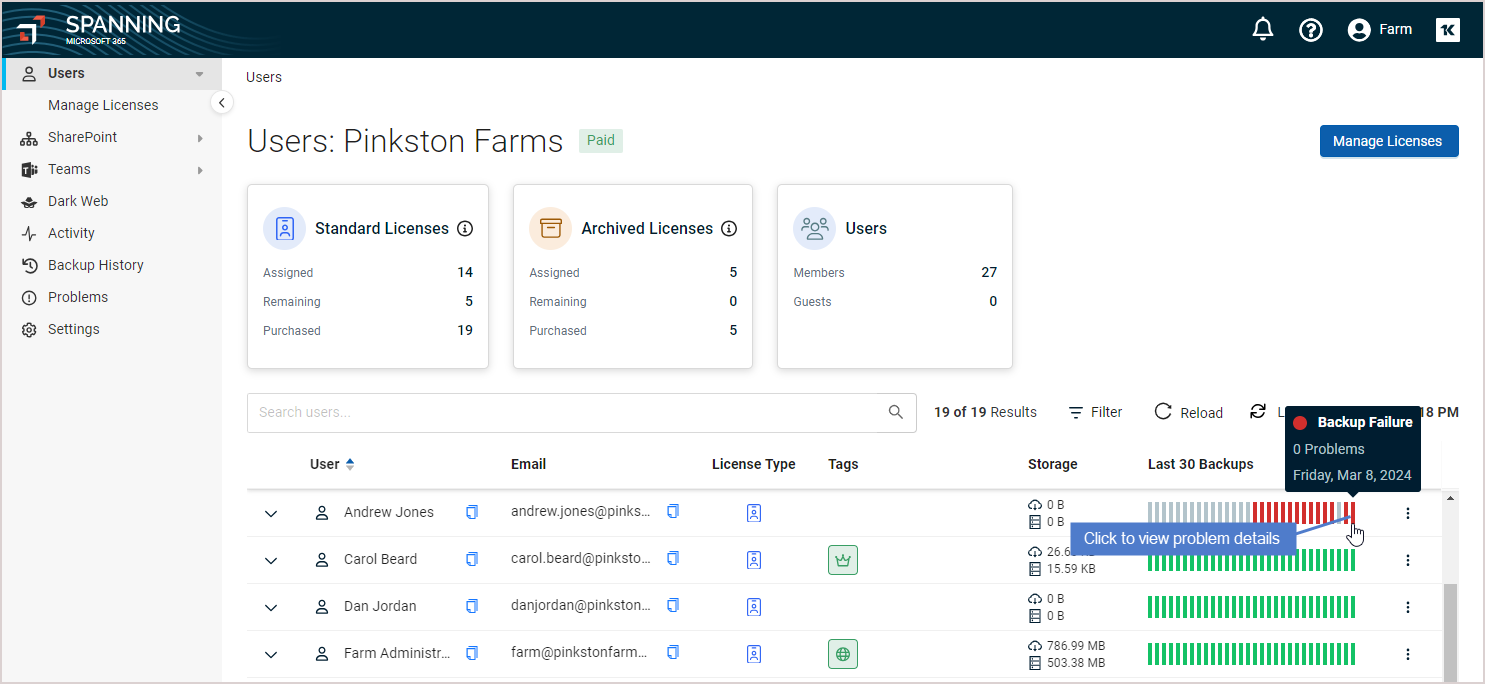
- Go to the Backup History page to view the backup history of all active Spanning users in your tenant. For details, see Viewing backup history.
- Go to the Problems page to view backup errors for the selected day or user. For details, see Managing errors.
To view an immutable log of application activity (such as restores and on-demand backups), see Viewing application activity.
To restore or export data, see these topics:
With Spanning Backup you get automated, enterprise-class protection of your Microsoft 365 data. Spanning Backup for Microsoft 365 provides these backup types:
- User backups – Spanning backs up this data for each licensed user: Mail, Calendars, Contacts, and OneDrive.
- Shared mailboxes – Spanning protects shared mailboxes. To run daily shared mailbox backups you must select specific mailboxes to protect as described below in Adding protection to shared mailboxes.
- SharePoint backups – Spanning backs up the document libraries and files contained within site collections in SharePoint. To run daily SharePoint backups you must select specific site collections to protect as described below in Enabling backup of SharePoint site collections.
- Teams Channel Conversation backups – Spanning provides automated backup of Teams data stored in SharePoint Online or OneDrive. In addition, you can opt to back up Teams Channel Conversations. To activate this feature, see To enable Teams Channel Conversation backup.
To administer Spanning Backup for Microsoft 365, the following are required:
- A Microsoft 365 for Business or Microsoft 365 Enterprise Tenant
- A Microsoft 365 Global Administrator account
- A Spanning Backup for Microsoft 365 subscription
Log in to Spanning Backup at https://o365.spanningbackup.com as an administrator.
Use these steps to onboard your Spanning Backup for Microsoft 365 tenant:
- If this is your first time logging in, the self-paced onboarding tour launches automatically. If not, launch the tour by clicking the graduation cap icon and selecting a task on the Tasks tab. Click an onboarding task to view its tour:

- Complete the tasks in the onboarding tour.
- Repeat this procedure to onboard additional Microsoft 365 tenants.
See these topics for supplemental information:
NOTE In the procedures below, the summary tiles that you see at the top of the Users, Manage Licenses, and Shared Mailboxes pages differ by subscription type. Other content on these pages is the same for all subscriptions. The procedures in this article apply to your subscription— even if your summary tiles look different than the example screenshots.

To start running backups, you must assign Spanning licenses to your users. Once standard licenses are assigned, Spanning begins running daily backups of each licensed user's Mail, Calendars, Contacts, and OneDrive data.
NOTE You can also opt to include shared mailboxes and SharePoint site collections in your daily backups. For details, see these topics below: Adding protection to shared mailboxes and Enabling backup of SharePoint site collections.
The amount of time it takes to complete your first backup will vary according to how much data you have stored in the user accounts, shared mailboxes, and site collections that are being backed up. After the initial backup is completed, subsequent daily backups are much faster since they include only new and changed data.
- 100 users
- 100 shared mailboxes
- 10 SharePoint site collections
- 10 Teams
NOTE For additional licensing procedures, see Licensing users.
- (Optional) Search for users by name or email address.
- (Optional) Search for users by using the advanced filters. This enables you to search across all columns and values on the page.
- (Optional) Check boxes to select users.
- Do one of the following:
- To assign licenses to selected users, click Activate Standard.
- To assign licenses to all users that meet current filter criteria, click Activate Licenses.
- You can enable backups for all users in your tenant in one action by clicking Activate Licenses (when no filters are currently applied). If filter criteria are applied (e.g., desired User Type), this action takes into consideration all filtered results (not only the users loaded in the list below if the list contains more).
- If an Insufficient Licenses message displays, you don't have enough licenses for the selected users. Do any of the following: select fewer users, purchase more licenses, or deactivate licenses to reduce the number of assigned licenses.
To start running backups of your shared mailboxes, you must add protection to your mailboxes. Spanning Backup provides a cost-effective way to protect the data in your shared mailboxes:
-
For Kaseya 365 and newer Spanning Backup subscriptions, Spanning includes unlimited shared mailbox protection— for free! To run daily backups of your shared mailboxes, you must select specific mailboxes to protect as described in To protect shared mailboxes. (To retain a shared mailbox's existing Spanning data but stop running new backups, see To archive shared mailboxes.)
-
Unlimited shared mailbox protection does not apply to Legacy Spanning Backup subscriptions. For Legacy subscriptions, the number of shared mailboxes you can protect is tied to the number of user licenses purchased:
You can protect one shared mailbox for each standard user license purchased. To start protecting your shared mailboxes, see To protect shared mailboxes.
You can archive one shared mailbox for each archived license purchased. (To start archiving a shared mailbox's backups, see To archive shared mailboxes).
Not sure which subscription type you have? See Do I have unlimited shared mailbox protection?
NOTE For additional procedures, see Protecting shared mailboxes.
- (Optional) Search for mailboxes by name or email address.
- (Optional) Search for mailboxes by using the advanced filters. This enables you to search across all columns and values on the page.
- (Optional) Check boxes to select mailboxes.
- Do one of the following:
- To protect selected mailboxes, click Activate Standard.
- To protect all mailboxes that meet current filter criteria, click Activate Licenses.
- You can enable backups for all shared mailboxes in your tenant in one action by clicking Activate Licenses (when no filters are currently applied). If filter criteria are applied (e.g., selected License type), this action takes into consideration all filtered results (not only the mailboxes loaded in the list below if the list contains more).
- For Legacy Spanning Backup subscriptions, if an Insufficient Licenses message displays you don't have enough user licenses for the selected mailboxes. Do any of the following to protect additional mailboxes: select fewer mailboxes, purchase more standard user licenses, or remove protection from other protected mailboxes.
Spanning runs daily backups of each protected shared mailbox.
Use this procedure to enable backup of selected SharePoint site collections.
Once enabled, Spanning begins running daily backups of the document libraries and files contained within the site collections you selected.
NOTE The SharePoint backup type must be enabled to run SharePoint backups. To check your current setting, see Backup & Security tab settings.
- Log into your Spanning Backup for Microsoft 365 account as an admin user.
- Click SharePoint.
- Click Manage Site Collections.
- Choose the toggles next to the site collections you want to protect or click Activate Backup for All to select them all.
NOTE During the trial period you are limited to 10 site collections. Once you have purchased Spanning Backup for Microsoft 365, you can protect all site collections (including new site collections automatically).
Spanning Backup for Microsoft 365 provides settings to help you manage and monitor your tenant. To finish setting up your Spanning Backup environment, configure these settings:
-
Enable Teams Channel Conversation backups as described in Backup & Security tab settings.
-
Set up notifications as described in Notifications tab settings.
-
Set up KaseyaOne Unified Login by configuring the Login with IT Complete and KaseyaOne Integration features.
-
Set up additional users as described in Roles & Permissions tab settings.
Now that you've assigned licenses, backups will run automatically each day. Check out these topics to get the most out of Spanning Backup:
See Working with application settings for more configuration options, such as automated licensing, security, and retention settings.
To view backup status, you can:
- Go to the Users page for a snapshot of the last 30 backups by user. Click a red backup failure icon to drill down and view details on the Problems page.

- Go to the Backup History page to view the backup history of all active Spanning users in your tenant. For details, see Viewing backup history.
- Go to the Problems page to view backup errors for the selected day or user. For details, see Managing errors.
To view an immutable log of application activity (such as restores and on-demand backups), see Viewing application activity.
To restore or export data, see these topics:
